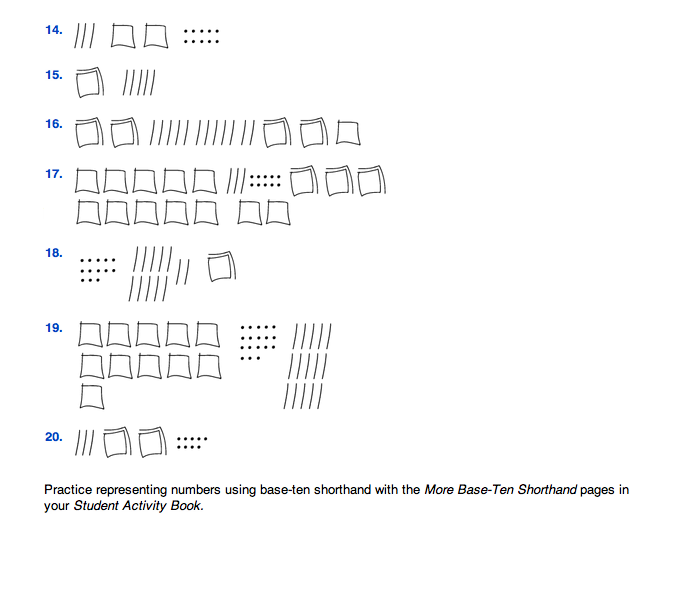The TIMS Candy Company
Est. Class Sessions: 2Developing the Lesson
Part 3. Fewest Pieces Rule
Discuss the Fewest Pieces Rule, expanded form, and standard form using the examples in the Fewest Pieces Rule section of the Student Guide.
When students use the Fewest Pieces Rule, they record numbers using the smallest possible numbers of base-ten pieces. To represent this using numbers, students partition the number using expanded form. For example, 457 is written 400 + 50 + 7. Standard form is 457.
Using the examples below, have students practice trading. They should start with the given number of base-ten pieces and continue trading until they have expressed the amount using the fewest number of pieces. They record their work on copies of the Base-Ten Recording Sheets from the Teacher Guide. Have students draw a circle around the representation that reflects the fewest pieces.
- 4 bits, 15 skinnies, 11 flats, 1 pack
- 12 bits, 11 skinnies, 11 flats
- 21 bits, 11 skinnies, 3 flats
Figure 7 shows the trades on a Base-Ten Recording Sheet for Example 1: 4 bits, 15 skinnies, 11 flats, 1 pack.
Using the Base-Ten Recording Sheet, we keep the column markings when recording numbers. Students should realize that if there is only one digit in each column, then the column markings are not necessary. We know that the right-most column records bits, the next column records skinnies, and so forth. Problems arise only if we are not using the Fewest Pieces Rule. For example, if we have 4 flats, 12 skinnies, and 35 bits, we cannot write 41235 without column marks. Thus, the way we record numbers is a convention where we assume there is one digit in each column and each column is a place with a certain value attached.
Write a number, such as 376, on the board.
Ask:
Do several more of these as needed. Then assign Questions 13–20 in the Fewest Pieces Rule section of the Student Guide.














